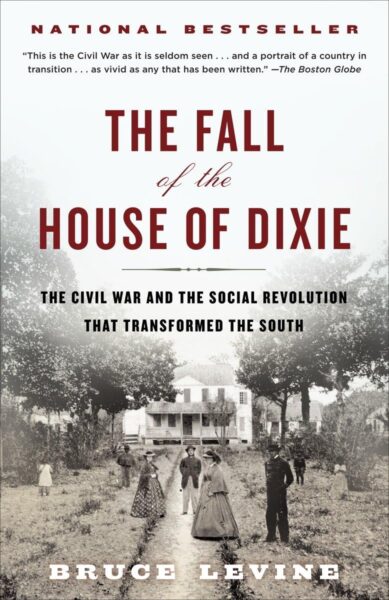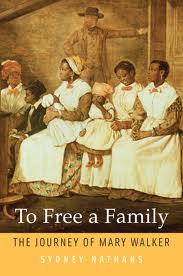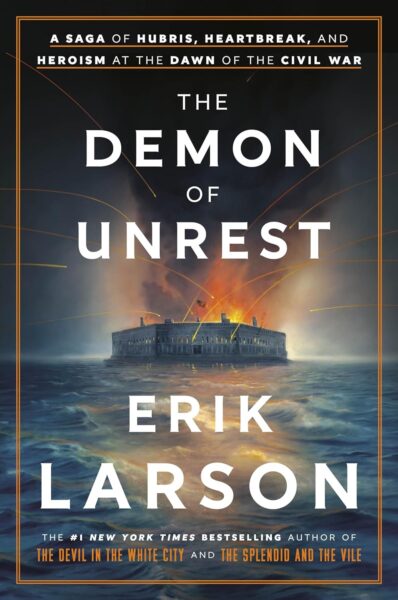As a young teenager enthralled by all things Civil War, I was gifted a copy of Confederates in the Attic: Dispatches from the Unfinished Civil War. The book, complete with the gaunt visage of hardcore reenactor Robert Lee Hodge on the cover, was a revelation. Together with millions of readers, I eagerly followed author Tony Horwitz on a gallivanting adventure across the landscapes of the American Civil War, discovering the people and places where the Civil War was still being waged. Since its publication in 1998, Confederates in the Attic has become required reading for anyone wishing to seriously grapple with how Americans remember, understand, and interpret the American Civil War. In his new, and final work, Spying on the South: An Odyssey Across the American Divide, Horwitz proffers up a kind of companion piece to his earlier best-seller–one more timely, more prescient, and ultimately more moving, than anything he has previously produced.
The genesis of Spying on the South was the rediscovery of Horwitz’s dust-covered collegiate copy of The Cotton Kingdom, a collection of writings on the American South penned by Frederick Law Olmsted. Olmsted, better known as a landscape architect and the visionary force behind New York’s Central Park, embarked on an arduous journey of the southern states on the eve of the American Civil War. Sent at the behest of the New York Times and employing the nom de guerre “Yeoman,” Olmsted penned dispatches chronicling to northern readers in 1854 a largely foreign world: a land of riverboats and plantations, roving bands of Native Americans, and shackled slaves toiling in the cotton fields. In his travels, which took him from Cumberland, Maryland, to distant outposts on the Texas frontier, Olmsted discovered a nation on the brink, tearing at the seams over the issues of race and slavery. Horwitz, a century and a half later, would follow the path Olmsted blazed, reporting on how the country had evolved, or devolved, in the years since his nineteenth century counterpart completed the same tour.
Horwitz’s timing was propitious. Setting out on the eve of the 2016 election, and coinciding with the rise of Donald Trump, he discovers a nation teetering on a proverbial fault line, and regressing into a kind of twenty-first century tribalism—not between slave state and free, as Olmsted encountered, but between red state and blue, blue collar and white. As Horwitz chronicles in the introduction, there “were inescapable echoes of the 1850s: extreme polarization, racial strife, demonizing of the other side, embrace of enflamed opinion over dialogue and debate.”
All of the formulaic elements that make Horwitz’s work so engrossing are on display in Spying on the South—and to great effect. Present is the unflagging humor, normally of the self-deprecating kind, the outlandish descriptions of the comical and terrifying situations he encounters, and an eccentric though well-meaning traveling companion—a ready foil to Horwitz’s earnest explorations. In Spying for the South, this role is played by Andrew Denton, a health-conscious Australian Horwitz punishes with an unending parade of artery-clogging southern fare.
From a cruise in a coal barge down the Ohio River, an extended backcountry mule ride featuring a recalcitrant animal and pernicious driver, to a sojourn across the chemical plant-studded bayous of south Louisiana, Horwitz lays bare a place and a people with all their complexities, flaws, and foibles on display. In Spying for the South, the past and present are places to explore, and the people inhabiting them are individuals to be understood, wrinkles and all. We would do well to approach our fellow Americans as Horwitz does. In his descriptions of those he encounters, be they unreconstructed plantation tour guides, down-on-their-luck factory workers, or conspiracy theorists holding court at their local watering hole, Horwitz seeks not to denigrate or denounce those on the opposite side of the political or social divide, but rather to understand them through logic and conversation, empathy and kindness.
Olmsted’s writings, which illuminated the racial flashpoints of antebellum America, were ultimately prophetic. Less than a decade later, armed conflict turned the winding rivers and fertile valleys of Olmsted’s explorations into battlefields and scenes of desolation. Horwitz, too, finds cause to be alarmed, but one detects a hint of optimism in his final passages. As his final coda, he chronicles an afternoon walk through Olmsted’s beloved Central Park. Amongst the winding pathways, secluded from the dehumanizing jostle of New York City, he finds Americans of different stripes engaging and exploring, mingling and communing, the natural setting of the park stripping away the divisive barriers of society.
On May 28 of this year, Tony Horwitz unexpectedly passed away. Beyond a talented author and gifted historian, he was an exceedingly kind man, unsparing in his generosity, and unstinting in his willingness to share of himself and his work. In his passing, we have lost a singular voice in the field of popular history—one not likely to be replaced. We can take solace in knowing that his body of work lives on, and that within the pages of his writing we find proof of the truism in William Faulkner’s epigram, “The past is never dead, it’s not even past.”
Christopher Gwinn is Chief of Interpretation and Education at Gettysburg National Military Park.





